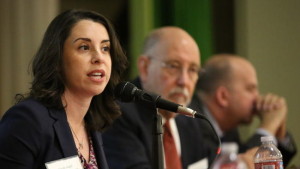L.A. School Group Offers List Of ‘Best Practices’ Facilities
Private Church Camps Prepare To House ‘Border Kids’
In L.A., Student Tickets Give Way To Counseling, Other Intervention

According to a 11/3/15 LA Times Report, “L.A. Unified sees success in counseling rather than arresting truants and kids who fight.”
The Los Angeles Times is following up on measures taken last year to reform an out-of-control truancy system. The shift actually began under pressure from civil rights groups and was approved back in 2012 when the LAT reported that: “Under the old policy, a student who received a truancy ticket had to appear in court with a parent. A judge would issue a fine and order the student to be on time for the next 60 days or face more legal trouble. Both the parent and student had to return two months later for a follow-up, causing the student to miss school time and the parent to lose wages.”
The update offered this background that the shift involves: “… 405 sworn L.A. Unified police officers who, along with more than 125 safety officers, make up the nation’s largest independent school police force. Across the nation, campus officers are facing criticism that they’re pushing children into a “school-to-prison pipeline” with citations, arrests and excessive force for issues that could be resolved by other means. National studies show that one arrest doubles a student’s odds of dropping out.”
The student truancy policies were also seen as a path to criminal records. While the initial “tickets” were treated as civil cases, failing to comply with the results, like paying fines or doing community work, led to criminal arrests.
Govt. Adding More Beds To Handle ‘Border Kids’

According to a 12/7/15 NYT report, “A United States Border Patrol vehicle at the border wall near Abram, Tex., last month. Credit Delcia Lopez/The Monitor, via Associated Press”
WSJ Report Outlines Delays For Federal Civil Court Dockets
Patent Cases Jump In Front of New Rules
San Bernadino and Savannah
Our hearts and prayers are with the families and communities of the mass shootings in San Bernadino, CA and Savannah, GA. <3
In-depth Analysis of Silver Conviction Implications
CCM publisher, Sara Warner, writes an in-depth analysis of the Sheldon Silver conviction implications in her latest Huffington Post blog. Take a look!
IVP Conference: CA Courts Filling With Out-of-State Cases
A recent conference hosted by the Independent Voter Project in California hit upon an issue we’ve been reporting on repeatedly here at CCM. California courts are filling with a backlog of out-of-state cases, as class action lawsuits fill the courts. This, in turn, is buckling the limited resources of the court system, leaving California residents either without nearby courts, or pushing their cases to the back of the line.
The conference focused on business interests, specifically, but a recent blog they posted noted that businesses are being impacted, alongside residents:
“The fairly recent development of mass-action lawsuits conglomerate residents of multiple states into one lawsuit. Usually it is filed in California due to plaintiff-friendly court policies. Consequently, California courts are filling up with lawsuits where many plaintiffs are not CA residents and don’t receive adequate legal representation.”
